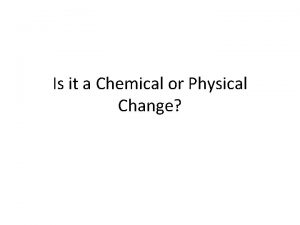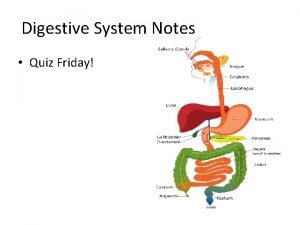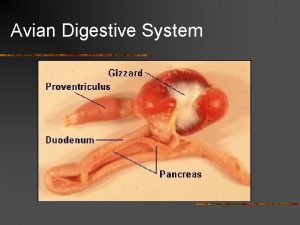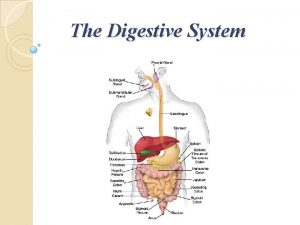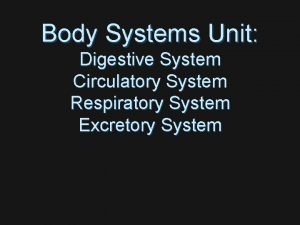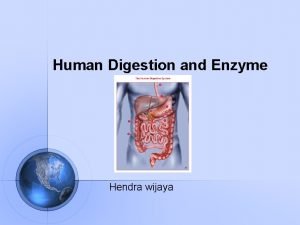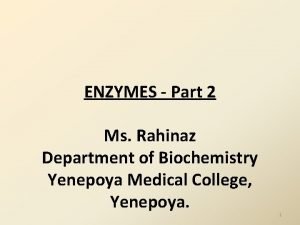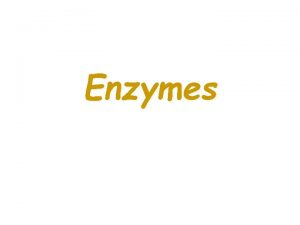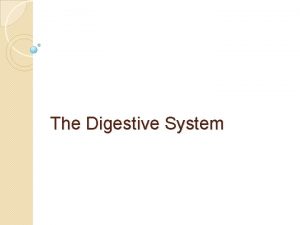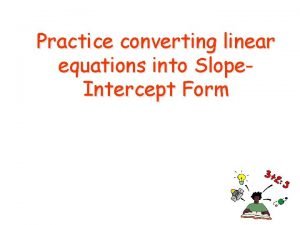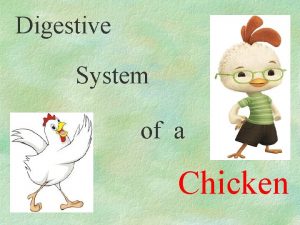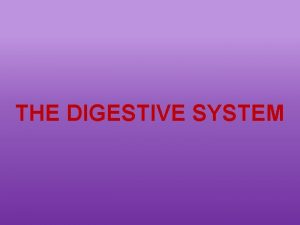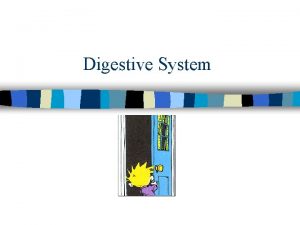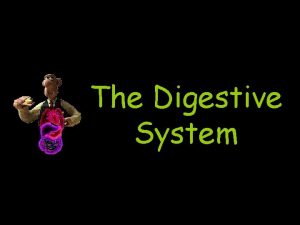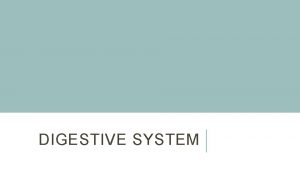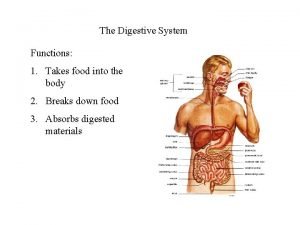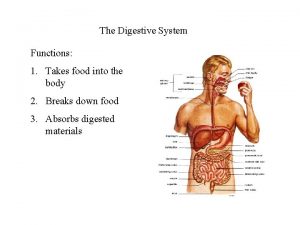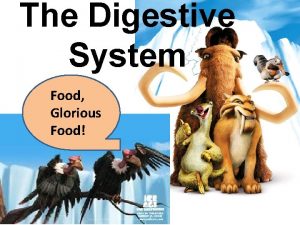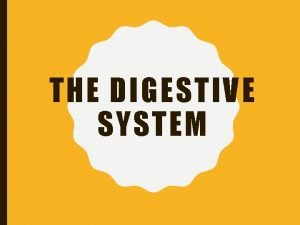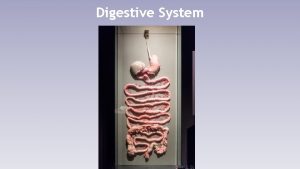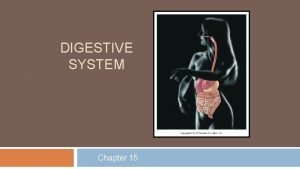Digestive System Digestive System Functions Change food into























- Slides: 23

Digestive System

Digestive System Functions: Change food into energy Digestion=breaking down food (2 stages) 1. Mechanical- physical 2. Chemical- changing food on a molecular level with enzymes • Peristalsis-muscle contractions that keep moving down the

Chemical digestion - process of changing food on a molecular level using enzymes

Which type of digestion is the following? 1. Chewing a saltine? - 2. Saliva breaking the saltine down into molecules of glucose? 3. Your tongue breaking pieces of a hamburger apart? 4. Pepsin (an enzyme) in your stomach breaking the hamburger into amino acids?


Mouth Teeth mechanically break down food into small pieces. Tongue mixes food with saliva (contains amylase, which helps break down starch). Epiglottis is a flap-like structure at the back of the throat that closes over the trachea preventing food from entering it.

Esophagus Functions include: 1. Secrete mucus 2. Moves food from the throat to the stomach using muscle movement called peristalsis If acid from the stomach gets in here that’s heartburn.

Stomach J-shaped muscular bag that stores the food you eat, breaks it down into tiny pieces. Mixes food with digestive juices that contain enzymes to break down proteins and lipids. Acid in the stomach kills bacteria. Food found in the stomach is called chyme. Takes about 4 hours to do its job on the food. 8

Small Intestine Lining of intestine walls has finger-like projections called villi, to increase surface area. The villi are covered in microvilli which further increases surface area for absorption. 9

10 2/13/2022

Small Intestine Cont. . Nutrients from the food pass into the bloodstream through the small intestine walls. Absorbs: 80% ingested water Vitamins Minerals Carbohydrates Proteins Lipids • Secretes digestive enzymes 11

Large Intestine Accepts what small intestines don’t absorb Rectum (short term storage which holds feces before it is expelled).

Large Intestine Functions Bacterial digestion Ferment carbohydrates Protein breakdown Absorbs more water – Concentrate wastes –

Accessory Organs Not part of the path of food, but play a critical role. Include: Liver, gall bladder, and pancreas

Liver Directly affects digestion by producing bile Bile helps digest fat • filters out toxins and waste including drugs & alcohol • Livers CAN regenerate missing pieces if necessary. 15

Gall Bladder Stores bile from the liver, releases it into the small intestine. Fatty diets can cause gallstones To remove the stones, that means you remove the gallbladder

Pancreas Produces digestive enzymes to digest fats, carbohydrates and proteins Regulates blood sugar by producing insulin Diabetes Type 1 - pancreas fails to produce enough insulin. Type 2 - Body stops responding properly to insulin created.

Spleen Located to the left of the stomach Functions- It acts as a filter for blood as part of the immune system

D. Digestive System Injury/Diseases Ulcers Diarrhea Acid reflux Cirrhosis of the Liver


On a sheet of paper, write the name of each colored organ: Green: Red: Pink: Brown: Purple: Green: Yellow:

How’d you do? Green: Esophagus Red: Stomach Pink: Small Intestine Brown: Large Intestine Purple: Liver Green: Gall Bladder Yellow: Pancreas Great Job!

References and Links Your Digestive System and How It Works Digestive system diagram comes from this site The Real Deal on the Digestive System Pancreas: Introduction and Index Your Gross and Cool Body - Digestive System
 Is a sparkler a chemical or physical change
Is a sparkler a chemical or physical change 4 functions of digestive system
4 functions of digestive system Circulatory system interactions with other systems
Circulatory system interactions with other systems Avian digestive system
Avian digestive system Swine digestive system
Swine digestive system Digestive system
Digestive system Unit 2 food food food
Unit 2 food food food Sequence of food chain
Sequence of food chain Path of food through the body
Path of food through the body Digestive system circulatory system and respiratory system
Digestive system circulatory system and respiratory system Enzymes examples
Enzymes examples Enzymes examples
Enzymes examples Enzymes examples
Enzymes examples 5 functions of the stomach
5 functions of the stomach Nervous system and digestive system
Nervous system and digestive system Quadratic equation vertex form
Quadratic equation vertex form Rock cycle sedimentary
Rock cycle sedimentary Converting to slope intercept form
Converting to slope intercept form Parts of vertex form
Parts of vertex form Mr sullivan teaches us grammar
Mr sullivan teaches us grammar Direct into indirect questions
Direct into indirect questions Soft adverbs
Soft adverbs Example of assertive sentence
Example of assertive sentence Twenty civilians in the bomb explosion
Twenty civilians in the bomb explosion
